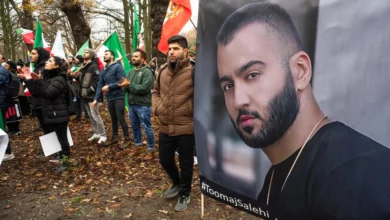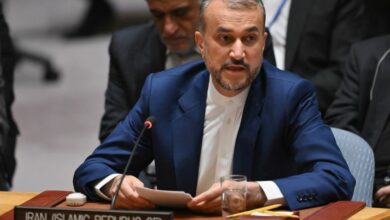
Soheila Sokhanvari’s retrospective “We Could Be Heroes…” takes its name from David Bowie’s 1977 classic “Heroes,” a song which has particular resonance for the Iranian born, UK-based artist. Like the two lovers separated by the Berlin Wall in Bowie’s song, Sokhanvari was separated from everything she knew and loved by the 1979 Revolution.
The experience inspired her vibrantly patterned miniature paintings which evoke a hazily remembered pre-revolutionary past where progressive and conservative values co-existed — albeit uneasily — and resurrects icons the Islamic Republic sought to destroy.
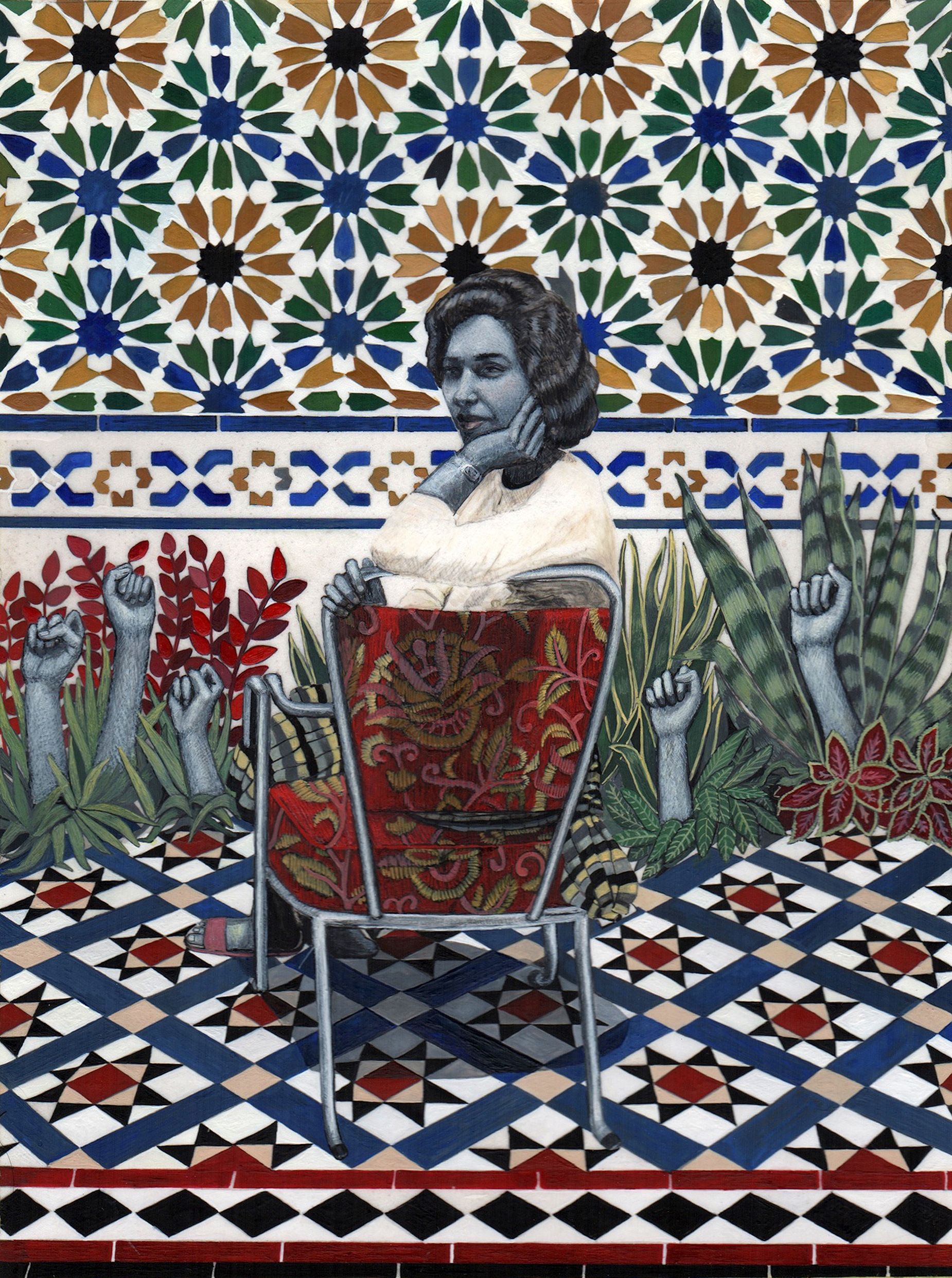
Sokhanvari, now 59, arrived in the UK in 1978 as a 14-year-old to stay with family friends, having never been away from loved ones before. The plan was for her to be educated in the UK before returning to Iran, but then the revolution began.
“Overnight I lost access to everyone I loved, my language, my culture, everything,” said Sokhanvari from her home in Cambridge via Zoom. She found consolation in a family photo album her mother had packed for her and began drawing from the images. “When I was drawing the people in the photos came alive and I could relive that moment again. It helped me cope with the longing for my family and my people,” she recalled.
The artist’s way
For as long as she can remember Sokhanvari had wanted to be an artist, but she initially trained as a research scientist to please her mother. However it was a profession from which she always felt alienated. “I felt like I was trespassing in the world of science,” she said.
A serious cycling accident in 1997 was the catalyst for Sokhanvari to finally follow her dream. “I promised myself that if I regained my health I would become an artist. I didn’t want any regrets in my life,” she explained.

In Sokhanvari’s early work, she used Iranian crude oil — the discovery of which in 1908 would lead to international intrigue, coups and violence — to create sepia-tinged drawings of family holidays and popular culture in pre-revolutionary Iran. The seemingly nostalgic pictures suggest that through our use of oil “we are all implicated in these histories. There isn’t a person on this planet who hasn’t used crude oil in some way. It’s in our clothes, in plastic, in paints,” said Sokhanvari. The images encourage us to acknowledge that the politics around its production and supply “comes with environmental, economic, and human cost,” she said.
But it is her later miniatures for which she has become best known. Painted in egg tempera (pigment mixed with egg yolk) on a parchment made from calf vellum (calf skin) using a squirrel hair brush — a technique traditionally associated with Persian miniatures — each small painting takes Sokhanvari between six and 12 weeks to create, working a minimum of 12-hours a day.

Her first major solo show, “Rebel Rebel”, which focused on her series of female performers silenced by the revolution, was warmly received by critics when it opened at the Barbican in London in 2022. Jackie Wullschläger in The Financial Times praised her “defiantly joyful art” while Jonathan Jones in The Guardian called it “ the opposite of instant art.”
Sokhanvari’s initial inspiration for her miniatures was the family photographs which had consoled her throughout her childhood. “My father and mother were my muses, they were these characters that I built up a story around,” she said. Pre-revolution her father worked as a fashion designer and model and encouraged Sokhanvari’s beehive-wearing mother to embrace western fashions. However her grandmother was far more traditional. “In the same family you can have this chasm between people who embraced western ideologies and those who rejected them,” she recalled.
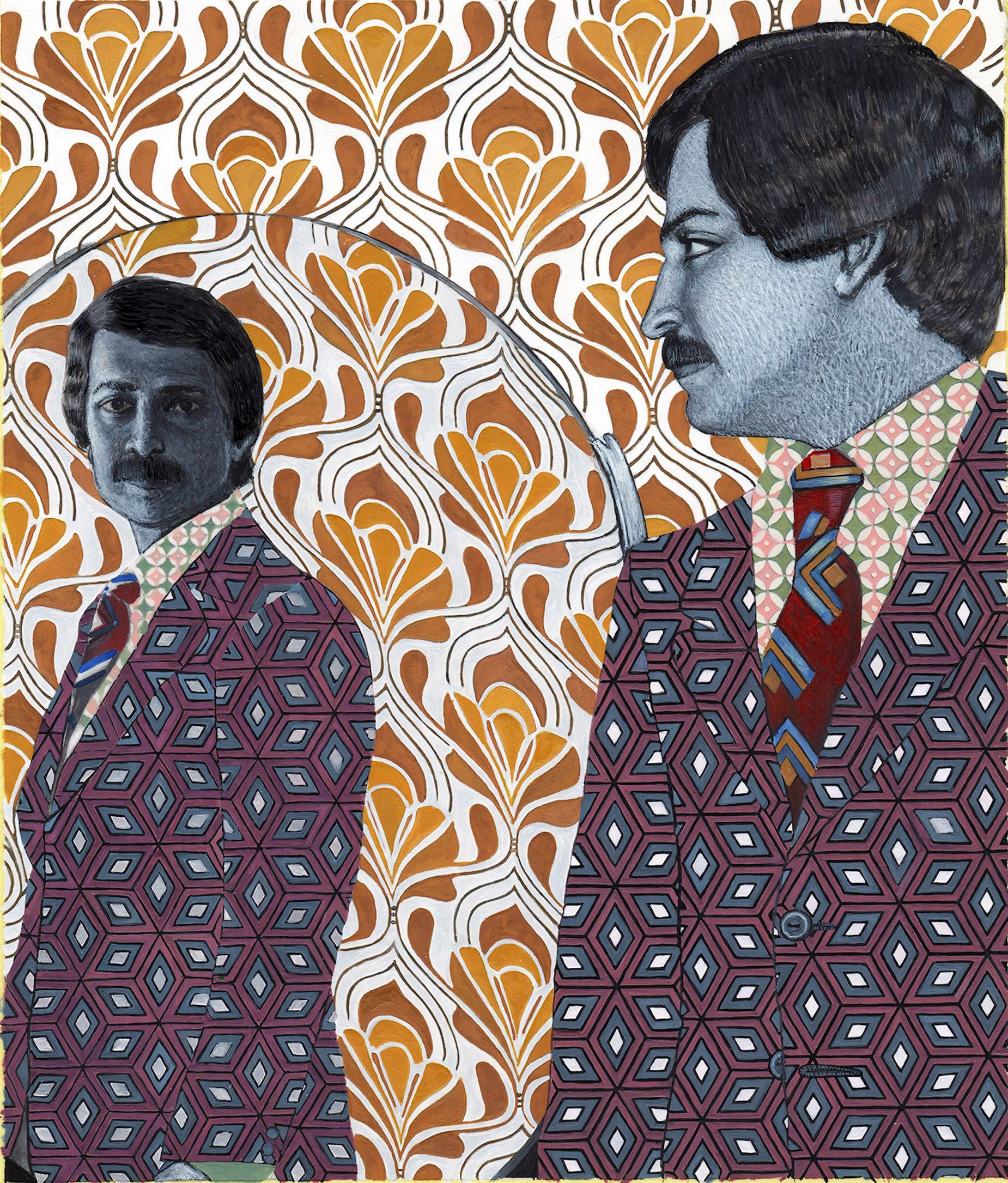
The conflicted ideologies are addressed via the combination of western and Islamic patterns in her work. “I put the two together because these people are trying to negotiate the two opposing cultures,” she said. In “Conquest of the Garden” (2016) her mother can be seen sitting on a chintzy chair in a walled garden decorated in bold Islamic tiles. Fists rise up from the flowerbeds.
Shining a spotlight on the hidden
It was in 2019 that Sokhavani began to focus on Iranian female performers such as actress Kobra Saeedi, who could no longer work following the 1979 revolution. Banned from performing, singing or dancing in public, many other artists were also imprisoned and allegedly tortured. Any films they had appeared in were burned and their images destroyed as the new regime attempted to erase any evidence that they had ever existed.
For Sokhanvari, who was only able to embrace her true vocation as an artist later in life, the desire to create their portraits was deeply personal. “I just thought of how I would feel if I were stopped from creating my art,” she said.

Using online images, Sokhanvari resurrects these women in their prime, creating modern day martyr portraits of a generation of women whose lives were destroyed. Some are caught in dramatic poses, others recline comfortably on a sofa, but all are enveloped in a riot of pattern and color, as they call out across the decades to be remembered.
Thanks to the UK-based Persian language TV channel Manoto — who interviewed Sokhanvari when “Rebel Rebel” was on — many Iranians now know that they have been.
Although Sokhanvari doesn’t want to name names for fear of endangering them, she says that a number of her subjects contacted her via Instagram having seen the program via satellite in Iran. The portraits could never be shown in Iran (the only work Sokhnavari has ever shown there are drawings she mailed to an artist friend in 2015) but at least the women knew they existed. “They said that it felt like a Renaissance for them,” she said. “They were so grateful to have been given a platform.”
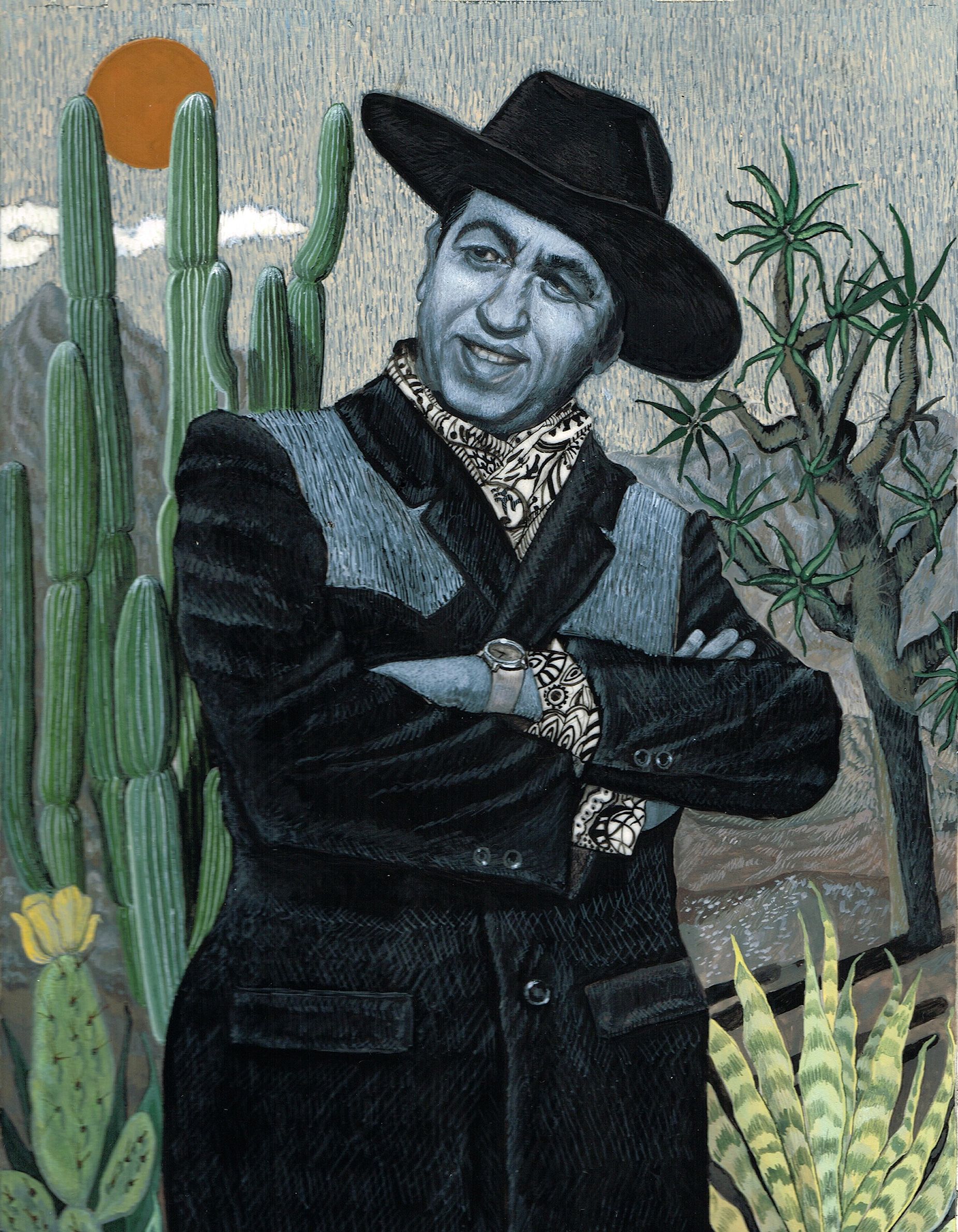
The Emmy Award-winning actor Shohreh Aghdashloo, one of Sokhanvari’s subjects who was actually able to continue her career having left Iran after the revolution, flew from Los Angeles to the UK to visit the show. “All of these women were her friends. She was so happy that their stories were being told,” said Sokhanvari.
She is also cautiously optimistic about the future of her country, thanks to both an increasingly secular younger generation and more men standing shoulder-to-shoulder with women. “If everybody rises up then we will win and the next generation will make a better Iran,” Sokhanvari said. “You have to have hope, right?”
Sheila Sokhanvari “We Could Be Heroes” is on at the Heong Gallery, Cambridge, UK, until 4 February 2024.

